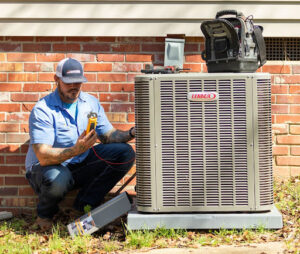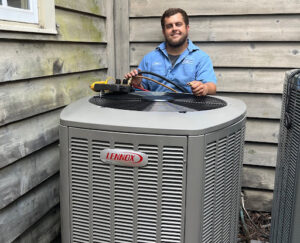Many homeowners would like to think that their home’s air is clean and free of harmful contaminants. However, it’s possible that your indoor environment is being affected by airborne pollutants. There can be short-term and long-term health effects of indoor air pollutants, such as heart disease, respiratory diseases, and cancer.
Before you can take steps to improve your home’s indoor air quality, you should first get to know the different types of airborne contaminants. Below, we’ll discuss the most dangerous indoor air pollutants and what you can do to improve your home’s indoor air quality.
Secondhand Smoke
One of the most dangerous indoor air pollutants is tobacco smoke. The United States Environmental Protection Agency (EPA) warns against the harmful effects that secondhand smoke can have on public health. Health issues caused by tobacco smoke can include shortness of breath, asthma attacks, and potentially lung cancer.
Airborne Allergens
Do you find yourself sneezing, coughing, or experiencing other respiratory problems—but only when you’re home? If so, there could be a buildup of allergens in your home’s air. Common allergens include dust, pollen, pet dander, and mold spores. These outdoor air pollutants can enter your home in several ways, including on your shoes and clothes.
If building occupants are exposed to these allergens, they might experience allergy and asthma symptoms when they spend time indoors. However, the health effects of these pollutants can potentially last longer than that.
Radon
Although it’s scentless and colorless, radon is another one of the most dangerous air pollutants found in homes. Radon is a naturally-occurring gas that can potentially enter your home via cracks or holes in the floors.
Behind tobacco smoke, radon is often considered the second leading cause of lung cancer in the U.S. The health effects of indoor air pollutants such as radon can include chest pain, difficulty breathing, and other issues associated with lung cancer.
Carbon Monoxide
While carbon monoxide also cannot be seen or smelled, it is certainly one of the most dangerous indoor air pollutants around. Fuel-burning appliances and devices—such as heating systems, water heaters, and stoves—can produce carbon monoxide when incomplete combustion occurs.
Poor ventilation can cause high levels of carbon monoxide to build up within your home, which can lead to health problems. Health effects of indoor air pollutants like carbon monoxide may include headaches, dizziness, fatigue, and even death.
Contact Us for IAQ Solutions
While open windows, new air filters, and routine household cleanings can help improve your indoor air quality, you might want to take further action to keep you and your family safe. Environment Masters understands how important it is to prioritize environmental health. Our technicians are proud to supply professional indoor air quality services that can help prevent the most dangerous indoor air pollutants from entering your home.
We supply everything from air purifier installations to air conditioner repairs in Jackson, MS, so you can trust your home is in capable hands. Our indoor air quality services are excellent at removing airborne particles and preventing the health effects of indoor air pollutants. We offer HRVs with humidifiers, dehumidifiers, and more. Contact us today to learn more about our indoor air quality services!





